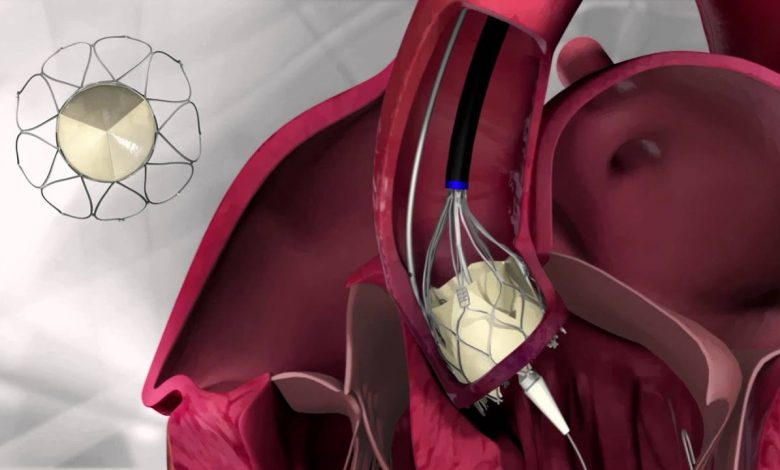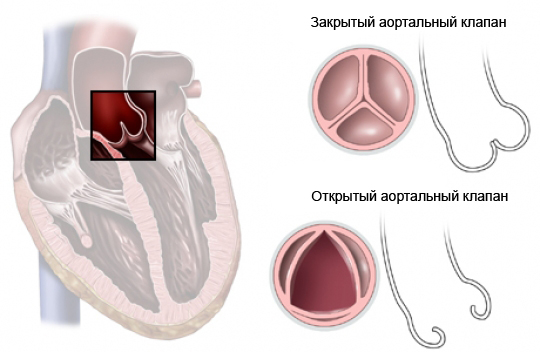Replacement of the aortic valve: what is this operation, causes, Contraindications, how they do it, what after

Description aortic valve replacement
Replacement of the aortic valve – open heart surgery. It is performed, to replace a malfunctioning aortic valve new. Replacement valve can be:
- Mechanical, which is made entirely of artificial materials;
- Bioprosthetic, It is made from a combination of synthetic materials and tissues porcine, Cow, or other animal;
- Allograft, the valve from a donor human heart;
- Procedure Rossa, individual patients under the age of 50 years, one of the patient's own heart valves, pulmonary valve, It can be installed in place of the aortic valve. In place of the pulmonary valve is sewn allograft.

Causes of aortic valve replacement
The aortic valve is located between the left ventricle of the heart and aorta (basilar artery). The aorta carries oxygen-rich blood from the heart to the rest of the body. The valve should be closed when the heart fills with blood. When the heart contracts and pumps blood into the aorta, the valve should open, to provide blood flow.
Aortic valve replacement is done if it is not working properly. The amount of oxygen-rich blood to the body can be significantly reduced by improper operation.
Sometimes, the aortic valve is deformed due to a birth defect. This is called congenital aortic valve. In another case, the aortic valve works well for many years, but then becomes too stiff to open and close fully. This is called acquired aortic valve disease. Sometimes this is due to aging. With age, calcium buildup on the valve and causing it to malfunction. The problem of the valve may result from other diseases, such as:
- Rheumatic valve disease (rheumatic fever) – complication of streptococcal throat infection, which can damage the valve;
- Endokardit – an infection in the heart, affecting the heart valves;
- Aneurysm aortы – abnormal widening or bulging of the aorta;
- Aortic dissection – bleeding into the wall of the aorta, usually due to the presence of an aortic aneurysm;
- Aortic stenosis – valve is too rigid, to open fully; hard heart to pump blood into the aorta;
- Aortic Valve Regurgitation – the valve does not close completely, and blood from the aorta back through the valve back to the heart.
Possible complications when performing aortic valve replacement
When planning the replacement of the valve should be aware of possible complications, which may include:
- Infection;
- Bleeding;
- Irregular heartbeat;
- Scarring;
- The appearance of blood clots as a result of stroke or kidney damage;
- Improper operation;
- Complications from anesthesia.
Some factors, that may increase the risk of complications include:
- The presence of other heart disease;
- Lung Diseases;
- Chronic diseases, including the presence of high blood pressure and diabetes;
- Advanced age;
- Infection;
- Smoking;
- Obesity.
How is aortic valve replacement?
Before surgery
The doctor performs the following tests:
- Physical examination;
- Blood tests;
- Echocardiogram – test, which uses sound waves to movements of the heart and its valves;
- Electrocardiogram (ECG) – test, which records the heart rate by measuring the electric current, passing through the heart muscle;
- Heart catheterization – a thin tube inserted into the heart. Further, it is injected through a radiopaque substance, and X-rays are made. These images can reveal problems with the functioning of the aortic valve, and to determine the, whether arteries healthy.
A few days before the procedure
- It may be necessary to stop taking some medicines:
- Aspirin or other anti-inflammatory drugs;
- Blood thinners, eg, clopidogrel (Plaviks) or warfarin;
- In the evening, the day before the operation you need to take only a light meal. On the day of surgery can not eat anything;
- It is necessary to prepare for the return home from the hospital after surgery;
- It is necessary to wear comfortable, clothing does not restrict movement.
Anesthesia
At step used general anesthesia. During the operation, the patient is asleep.
Description aortic valve replacement surgery
In the middle of the chest incision and the chest is expanded in such a way, to be able to reach the heart. It will be joined by lung machine, who does the work of the heart and lungs. This allows the doctor to stop the heart, to safely work on the heart valve.
The aorta will make the cut. The damaged valve is removed, and in its place a new valve is sewn. The aorta and sewn. Heart starts again, and the heart-lung machine is disconnected. Thorax connected, and skin incision in the chest sewn stitches or staples.
After surgery, aortic valve replacement
The patient is sent to the intensive care unit, where it is derived from the state of anesthesia and performed control of vital parameters:
- Track heart rate, respiration rate, blood pressure and the oxygen percentage in blood;
- Ventilation tube inserted into the mouth and into the lungs, to provide an additional supply of oxygen;
- Set the tube to remove excess fluid from the breast;
- The special tube inserted into the stomach through the nose, to remove excess fluid and gas;
- In order to drain urine bladder catheter is inserted;
- Through the IV fluid input, electrolytes, and pain medications – directly into a vein.
How long does the surgery?
The operation takes two to four hours.
Replacement of the aortic valve: Will it hurt?
Anesthesia will prevent pain during surgery. The incision on the chest will cause pain after surgery. For the relief of pain the patient is administered pain medications.
The time spent in hospital
The usual length of stay is 5-7 days. Duration of hospital stay will depend on the health and speed of recovery. The doctor can extend the time spent in hospital, If there are complications.
Postoperative care after aortic valve replacement
In the hospital
Usually, ICU patient is within 1-2 days. Then he moved to a regular room, where it will remain for a few more days.
The patient can be assigned to use a spirometer, every two hours during the day. This helps keep the lungs as open as possible, that will help to avoid pneumonia.
At home
The patient can resume normal activities within six weeks after surgery. It is necessary to follow the doctor's instructions regarding, when you can begin to move, perform exercises, lift things and strain.
- If a mechanical valve was inserted, you need to take blood-thinning medicines (antykoahulyantы) all life. They are required, to avoid formation of thrombus around the valve;
- Depending on the type of valve will need to take antibiotics before dental or surgical procedures some;
- The patient may be referred for cardiac rehabilitation. It can help to restore the normal functioning of the heart and reduce the likelihood of future problems;
- Be sure to follow your doctor's instructions.
Need to go to the hospital in cases after aortic valve replacement:
- There are signs of infection, including fever and chills;
- Redness, edema, strong pain, bleeding, or any discharge from the incision;
- Breathlessness, dizziness or fainting;
- Cough or chest pain;
- Nausea and / or vomiting, which continue for more than two days after discharge from the hospital, and do not stop after taking the appropriate medication;
- Inability to relieve pain using painkillers;
- Difficulties, pain, burning, high frequency, bleeding during urination;
- Pain or swelling in the legs, calves or feet.
